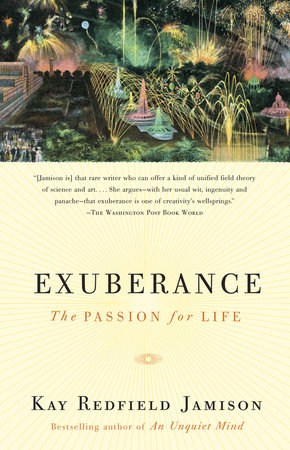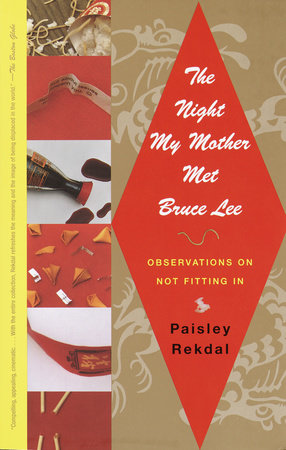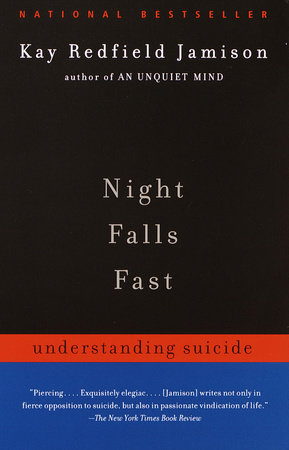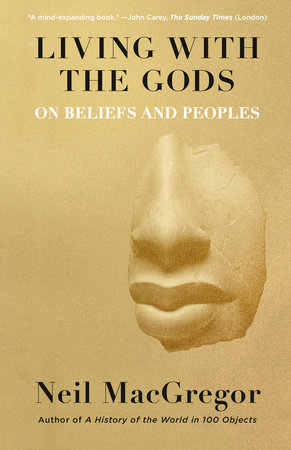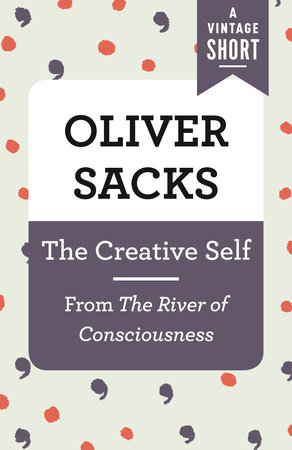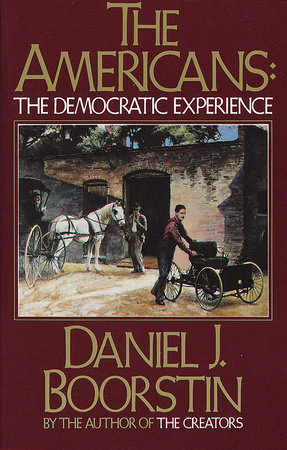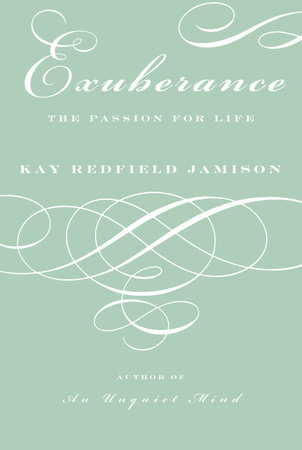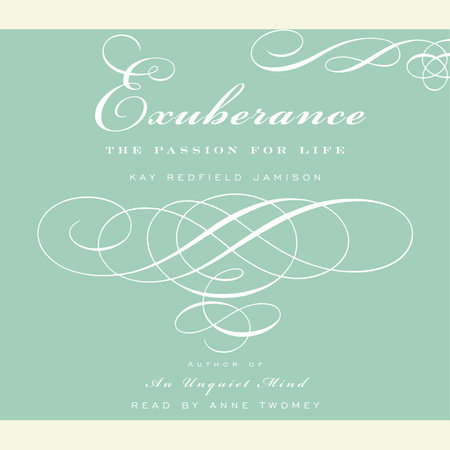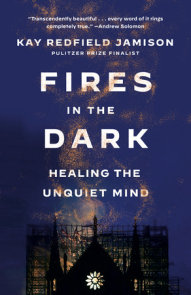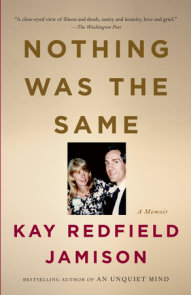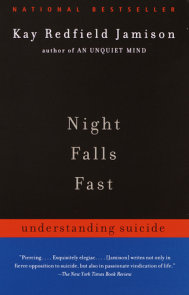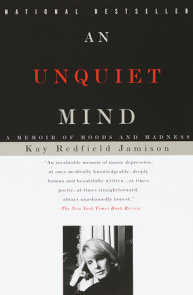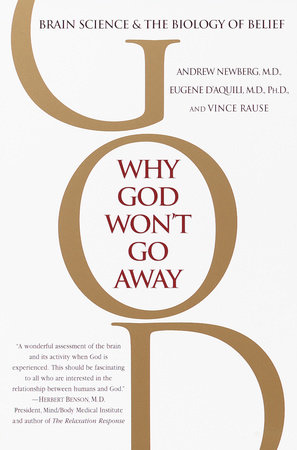Author Q&A
A Conversation with Kay Redfield Jamison
Q: Your previous books (e.g. An Unquiet Mind, Night Falls Fast) focused on depression and suicide. Why did you turn to exuberance as the subject of this book?
A: My overriding intellectual and clinical interest has been in the understanding of moods: what they are, why they exist, why there is such a diversity in the intensity and experience of moods across different people, and what role they play in the lives of not just humans but other mammals as well. As a clinician, researcher, and person who suffers from manic-depressive illness, I have long been intrigued by the “high” moods and active, optimistic temperaments often associated with mania, and I have written about them for decades. In their mild forms exuberant states are intoxicating and adaptive but in their extremes they are pathological; in short, exuberance can range from imagination and exploration to recklessness and madness. Likewise, exuberance is not uncommonly associated with depression and, on occasion, suicide. Most people who are exuberant do not become clinically depressed, but some do, and for many others exuberance is part of a continuum of excited states which can include mania at the extreme end.
Q: How do you define exuberance? How is it distinct from joy or ecstasy?
A: Exuberance is a psychological state characterized by high mood and high energy. As I discuss in the book, its origins come from the natural world, where its meaning centers on abundance, liveliness, and fertility. It is a more physically alert and active state than joy and of longer duration than ecstasy.
Q: Is there a clear dividing line between exuberance and mania?
A: Exuberance can escalate into mania in people who are predisposed to manic-depressive or bipolar illness. Most exuberant people never become manic, but those who have bipolar illness often have an exuberant temperament. The relationship between the two is a fascinating one. We know infinitely more about the continuum of depressive states than we do about the continuum of elated states. One of the things I try to do in my book is develop the relationship between extraversion–a temperament characterized by outgoingness, vitality, and optimism–the capacity for exuberance, and the vulnerability to mania. Mostly, however, my focus in the book is on the highly adaptive and essential nature of exuberance.
Q: Why do you think exuberance is more fragile than what you term “the more morbid emotions–depression, anger, anxiety”?
A: Exuberance is vulnerable to assault and ridicule but, much more importantly, exuberance is not recognized for the vital role it plays in discovery, creativity, leadership, and survival itself. It is vulnerable to being taken for granted or stifled.
Q: Can specific experiences trigger exuberance or is it passed genetically from parent to child?
A: There is a large inherited quality to both extraversion and exuberance as temperaments–that is, as characteristic features of an individual’s personality–but everyone experiences times of exuberance and these, of course, are often triggered by events (such as personal or professional successes, childbirth, national celebrations).
Q: Why do most experts believe that exuberant temperament is an essential element in genius? (Louis Armstrong and James Watson are two examples given in the book.)
A: A great deal of psychological research which I cover extensively in the book demonstrates a strong relationship between elevated mood (whether induced experimentally or occurring naturally by temperament or mild mania) and creative thought. The combination of elevated mood with the energy to execute ideas is a formidable one. I interviewed several of the top scientists in the world for this book, and they speak eloquently and extensively about the vital role of exuberance in their intellectual work.
Q: How does exuberance serve as a practical tool that spurs human evolution?
A: Exuberance drives all of us to think and act in slightly different ways than we otherwise would do, to take risks we would not otherwise take, to tolerate pain and setback we might otherwise find incapacitating. It allows or gives us the optimism to believe in the future and in the possibilities and importance of what we are and what we are doing; it forces us out into a greater arena of life.
Q: What are some of the dangers of exuberance?
A: Judgment can be impaired by undue confidence; unnecessary and unfruitful risks may be taken; a moral compass may be compromised by the heat of the overriding passions (exhilaration of war or love, irrational financial speculation); other peoples’ sensibilities and perspectives may be overlooked or overwhelmed; a gravitas may be missing.
Q: Exuberant people tend to be very extraverted and active. They are leaders. Because of the appealing social qualities of exuberance, people often seek to simulate it, wouldn’t you say?
A: People have for centuries sought to induce exuberant and euphoric states–through dance, drugs, music, national celebrations–but many of the most powerful leaders seem to come by their exuberance naturally. One of the clearest things about exuberance is that it is a contagious state and many leaders (for example FDR and Theodore Roosevelt and Winston Churchill) “infected” or infused others with their own vast reservoirs of enthusiasm.
Q: The scientist Carleton Gajdusek writes of society’s attitude that “Not to show [exuberance] suggests ennui but to have too much is madness.” Do you think this outlook of insisting on a middle course is correct or should we be more accepting of manic behavior?
A: Carleton Gajdusek’s belief is that people are too often uncomfortable with a great deal of exuberance–that they don’t quite trust it–but that exuberance is absolutely essential to much that is best in human nature.
Exuberance is critically related to awe, wonder, and spiritual quest. Without discovery and exploration we wither–exuberance is both a reward and a propelling force. It is important that our species have a diversity of temperaments, from the shy and inhibited to the bold and uninhibited.
